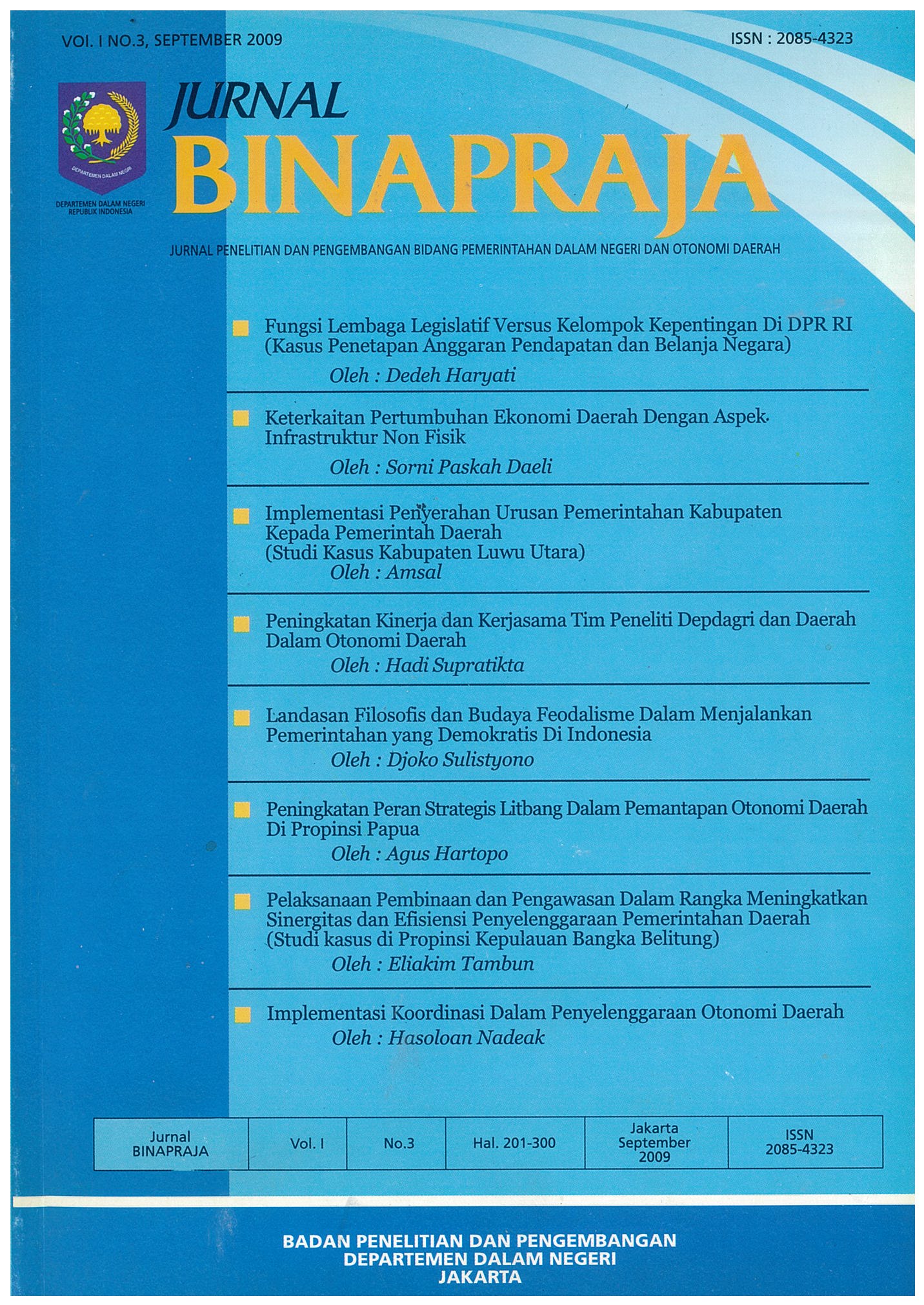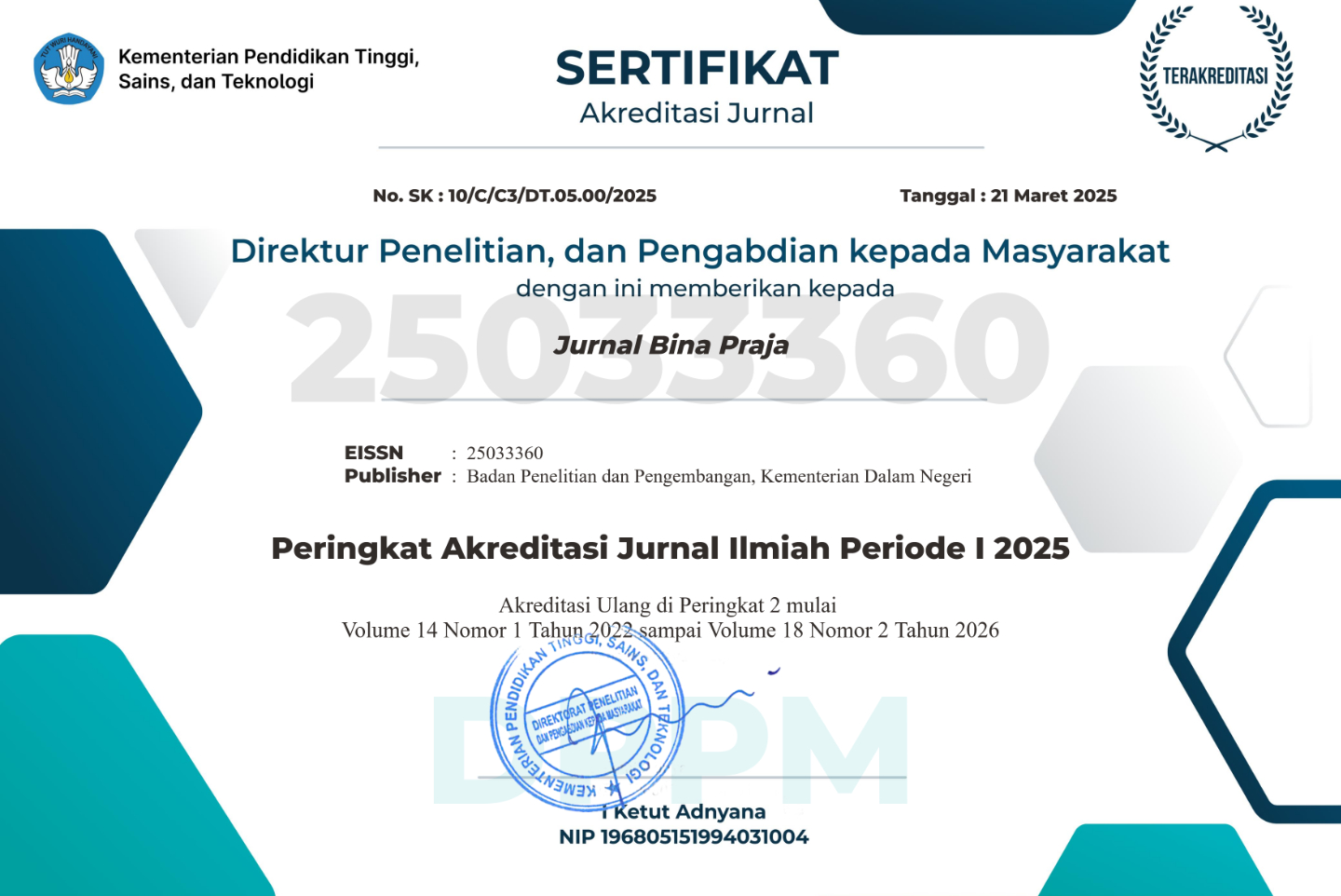Linkage of Regional Economic Growth with Non-Physical Infrastructure Aspects
DOI:
https://doi.org/10.21787/jbp.1.2009.213-221Keywords:
non-physical infrastructure, regional economic growthAbstract
This study aims to provide an overview of the relationship between non-physical infrastructure and regional economic growth. For this purpose, secondary data from BPS in 2007 is required. The analysis uses quantitative secondary data analysis techniques using regression models in the form of cross-sections. The results show the relationship of non-physical infrastructure aspects to regional economic growth, such as: income per capita per year, literacy rate and population density. This study suggests that the government should improve its ability to provide the non-physical infrastructure needed by the community, especially those needed for SOM empowerment. It is also suggested that the government should gradually move the concentration of industries to areas outside Java by providing adequate infrastructure facilities and infrastructure, so that the population is not only focused on the island of Java but is spread evenly across other islands in Indonesia.Downloads
References
Akatsuka, Y., dan Yoshida, T., 1999. Systems for Infrastructure Development; Japan's Experience. Japan International Cooperation Publishing Co., Ltd., Tokyo.
Briceno, C., Estache, A., dan Shafik, N., 2004. Infrastructure Services In Developing Countries: Access, Quality, Costs and Policy Reform, The World Bank.
Cannning, D., and Pedroni, P., 1999. Infrastructure and Long Run Economic Growth, paper, July,
Badan Pusat Statistik, 2009. Statistisk Indonesia 2007, BPS Indonesia, Jakarta.
Darja, J., et. al., 2004. “The State of Village-Level Infrastructures and Public Services in Indonesia During the Economic Crisis”, The SMERU Research Institute, Jakarta.
de la Fuente, A. (2002), “Convergence Across Countries and Regions: Theory and Empirics,” UFAE and IAE Working Papers 555.02, Unitat de Fonaments de l'Analisi Economica (UAB) and lnstitut d'Analisi Economica (CSIC).
Demurger, S., 2001. “Infrastructure Development and Economic Growth: An Explanation for Regional Disparities in China?”, Journal of Comparative Economics, Vol. 29, pp.95-1 1 7.
Estache, A., 2004. “Emerging Infrastructure Policy Issues in Developing Countries: A Survey of the Recent Economic Literature,” Background Paper for the October 2004 Berlin meeting of the POVNET Infrastructure Working Croup, The World Bank.
Hudson, W. R., Haas, R., dan Uddin, W. 1997. “Infrastructure Management: Integrating Design, Construction, Maintenance, Rehabilitation, and Renovation,” McGraw-Hill, New York.
Kessides, C., 1993. “The Contributions of Infrastructure to Economic Development - A Review of Experience and Policy Implications,” World Bank Discussion Papers No. 213, World Bank, Washington D.C.
Prud'homme, R., 2004. Infrastructure and Development, Washington DC, Paper prepared for the ABCDE (Annual Bank Conference on Development Economics), May 3-5.
Pyndick, R.S., and Rubinfeld, D. L., 1998. Econometric Models and Economic Forecasts, Fourth Edition, Irwin, McGraw-Hill, USA.
World Bank, 1994. “Infrastructure and Development,” The Annual World Development Report for 1994, Washington DC.
World Bank, 2005. Indonesia: New Directions, World Bank Brief for the Consultative Croup on Indonesia, 19-20 January, Jakarta.
World Bank, 2005. World Development Indicators 2005, World Bank, tersedia online di http://ddp-ext.worldbank.org/ext/DDPQQ/showReport.do?method=showReport, diakses, 18 Mei, 2009.
Downloads
Published
How to Cite
Issue
Section
License
Copyright (c) 2009 Author(s)

This work is licensed under a Creative Commons Attribution-NonCommercial-ShareAlike 4.0 International License.
















